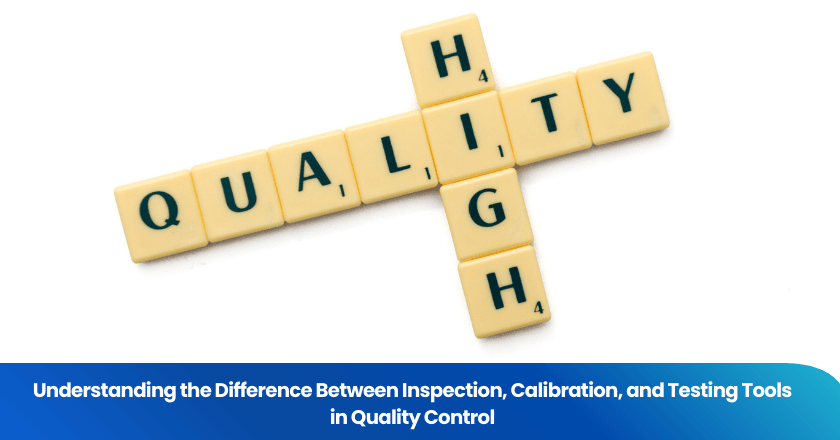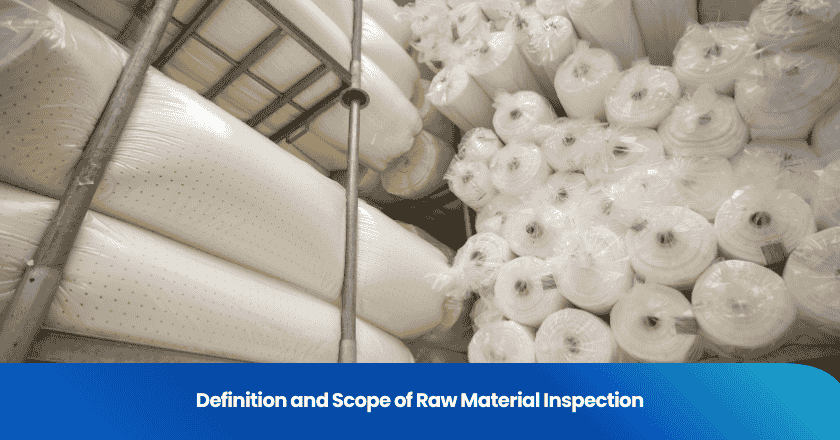
Inspection, calibration, and testing tools serve as essential components within a quality system. Inspection uses quality inspection instruments to confirm that products meet defined standards. Calibration ensures that measuring tools deliver accurate results, supporting quality management. Testing evaluates product performance and reliability, strengthening the overall quality management process. Distinguishing these tools helps professionals maintain compliance and achieve consistent product quality.
Key Takeaways
- Inspection tools check products to make sure they meet quality standards before moving forward.
- Calibration keeps measurement tools accurate by comparing and adjusting them against known standards.
- Testing tools evaluate how well products perform and hold up under real-world or controlled conditions.
- Using the right tool for inspection, calibration, or testing ensures reliable results and consistent product quality.
- Regular calibration, verification, and documentation help maintain accuracy and support compliance with quality standards.
Key Differences
Inspection vs Calibration
Inspection and calibration serve distinct roles in quality control. Inspection focuses on evaluating products or components to ensure they meet established standards. Inspectors use measurement instruments to check dimensions, appearance, and other attributes. The goal is to confirm conformity with specifications.
Calibration, on the other hand, deals with the measurement accuracy of instruments themselves. Technicians compare the readings of a tool against a known standard. They adjust the tool if necessary to maintain accuracy. Calibration ensures that measurement results remain reliable over time.
Tip: Inspection checks the product, while calibration checks the tool that measures the product.
| Aspect | Inspection | Calibration |
|---|---|---|
| Purpose | Verify product meets standards | Ensure measurement accuracy |
| Focus | Product or component | Measurement instrument |
| Frequency | At various production stages | At scheduled intervals |
| Outcome | Conformity or non-conformity | Adjustment or confirmation |
Calibration vs Testing
Calibration and testing differ in their objectives and processes. Calibration maintains the accuracy of measurement instruments by comparing them to a reference standard. This process involves adjustment and documentation to ensure the instrument provides precise readings.
Testing evaluates the performance, durability, or safety of a product under specific conditions. Engineers use testing tools to simulate real-world scenarios. They assess whether the product meets functional requirements and standards.
- Calibration ensures instruments provide accurate measurements.
- Testing validates product functionality and reliability.
Note: Calibration supports measurement accuracy, while testing supports product validation.
Inspection vs Testing
Inspection and testing both contribute to quality assurance, but they address different aspects. Inspection uses tools to check if products meet visual, dimensional, or physical standards. Inspectors perform these checks at various stages of production.
Testing goes further by subjecting products to controlled conditions. The process measures how products perform, endure stress, or respond to environmental factors. Testing provides validation that products function as intended and comply with standards.
- Inspection confirms product conformity with standards.
- Testing provides validation of product performance and durability.
| Comparison Point | Inspection | Testing |
|---|---|---|
| Main Purpose | Check conformity to standards | Validate performance and durability |
| Method | Visual and measurement checks | Simulated or real-world conditions |
| Timing | During or after production | After production or during R&D |
| Outcome | Pass/fail against standards | Data on product capabilities |
Quality control relies on inspection, calibration, and testing to ensure products meet standards, measurement accuracy, and validation requirements.
Quality Inspection Instruments
What Are Inspection Tools
Quality inspection instruments play a vital role in verifying product quality and conformity. These tools help inspectors measure and assess various attributes of products, such as dimensions, surface finish, and appearance. They include devices designed for measurement, comparison, and evaluation. Inspectors rely on these instruments to ensure that each item meets the required standards before it moves to the next stage of production.
Common quality inspection instruments include calipers, micrometers, gauges, and visual assessment tools. Each instrument serves a specific purpose in the inspection process. For example, calipers measure length and thickness, while gauges check the fit and alignment of components. Visual inspection tools allow inspectors to detect surface defects or irregularities. These instruments support consistent product inspection and help maintain high levels of quality.
Accurate measurement with quality inspection instruments ensures that products meet specifications and reduces the risk of defects.
Inspection Process
The inspection process involves several steps that help verify product conformity. Inspectors begin by selecting the appropriate quality inspection instruments for the task. They review product specifications and determine which attributes require measurement. The process often starts with a visual examination to identify obvious defects.
Next, inspectors use measurement tools to check critical dimensions and features. They record the results and compare them to the standards outlined in the product inspection plan. If any measurements fall outside the acceptable range, inspectors flag the item for further review or corrective action.
A typical inspection process includes:
1. Reviewing product specifications and requirements.
2. Selecting suitable quality inspection instruments.
3. Conducting visual and measurement checks.
4. Recording inspection results.
5. Making decisions based on conformity to standards.
This systematic approach ensures that every product meets quality expectations. Inspectors use their expertise and reliable measurement tools to maintain consistency and support overall quality management.
Calibration
Calibration ensures measurement accuracy in quality control. This process involves comparing measurement instruments to a traceable standard. Calibration supports high accuracy tasks and maintains the reliability of measurement tools. Organizations rely on calibration to meet accuracy standards and comply with iso 17025 accredited requirements. Reliable calibration forms the backbone of precision measurement and validation in any industry.
Calibration Process
A calibration technician starts by selecting measurement instruments that require calibration. The technician uses a nist traceable reference to compare the instrument’s readings. If the instrument deviates from the standard, the technician adjusts it to restore accuracy. This process guarantees that measurement results remain consistent with established standards. Precision measurement depends on regular calibration and validation, especially for high accuracy tasks.
The calibration process includes several steps:
1. Identify measurement instruments for calibration.
2. Use a nist traceable standard for comparison.
3. Record measurement data and note any deviations.
4. Adjust the instrument to meet accuracy standards.
5. Document the calibration results for traceability and future verification.
Calibration ensures that measurement tools deliver reliable results. Iso 17025 accredited laboratories follow strict procedures to maintain measurement accuracy and traceability. These steps support validation and compliance with industry standards.
Calibration vs Verification
Calibration and verification serve different purposes in quality control. Calibration adjusts measurement instruments to align with a traceable standard. Verification checks if an instrument meets specified accuracy standards without adjustment. Both processes play a role in validation, but calibration involves correction, while verification confirms performance.
Verification often follows calibration to ensure ongoing accuracy. Iso 17025 accredited facilities perform both calibration and verification to maintain compliance. Nist traceable references provide the foundation for both processes. Precision measurement and validation require regular calibration and verification to uphold standards.
Tip: Use calibration for adjustment and verification for confirmation. Both support measurement accuracy, validation, and compliance with standards.
Testing
Testing Tools
Testing plays a critical role in quality control by assessing how products perform under specific conditions. Testing tools help engineers and technicians evaluate characteristics such as strength, durability, and safety. These tools simulate real-world environments or apply controlled stress to products. For example, a hardness tester measures how resistant a material is to deformation. A tensile tester checks how much force a product can withstand before breaking. Each tool targets a specific property, allowing teams to gather precise data.
Routine testing uses these tools to monitor product consistency over time. By repeating tests at regular intervals, organizations can detect changes in quality early. This approach helps prevent defects from reaching customers. Testing tools must remain accurate and reliable to ensure valid results. Technicians often calibrate these tools to maintain measurement integrity.
Note: Testing tools provide objective data that supports decision-making in quality management.
Testing in Quality Control
Testing in quality control verifies that products meet performance and safety standards. Teams design tests based on product requirements and industry regulations. They expose products to various conditions, such as temperature changes, pressure, or repeated use. The goal is to identify weaknesses or potential failures before products reach the market.
The testing process usually follows these steps:
1. Define the test objectives and criteria.
2. Select appropriate testing tools and methods.
3. Prepare the product sample.
4. Conduct the test under controlled conditions.
5. Record and analyze the results.
Testing provides valuable feedback for product improvement. It also supports compliance with regulatory standards. By using testing throughout the production cycle, organizations can ensure products remain safe, reliable, and effective.
Tip: Consistent testing helps maintain high product standards and builds customer trust.
Inspection, calibration, and testing tools each serve unique roles in quality control. Inspection verifies product conformity, calibration maintains measurement accuracy, and testing assesses performance. Understanding these differences supports effective quality management and regulatory compliance.
Best practices for tool selection and use:
- Match the tool to the specific quality control objective.
- Schedule regular calibration and verification.
- Document all inspection and testing results.
Continuous learning ensures teams stay current with evolving standards and technologies. ��️
FAQ
What is the main purpose of inspection tools in quality control?
Inspection tools help verify that products meet specific standards. Inspectors use these tools to measure dimensions, check appearance, and confirm conformity. Accurate inspection supports consistent product quality.
How often should calibration be performed on measurement instruments?
Technicians schedule calibration at regular intervals based on usage, manufacturer recommendations, and industry standards. Frequent calibration ensures measurement accuracy and supports compliance with quality requirements.
Why is testing important in the quality control process?
Testing evaluates product performance, durability, and safety. Engineers use testing to identify weaknesses and ensure products function as intended. Reliable testing helps prevent defects from reaching customers.
What is the difference between calibration and verification?
Calibration adjusts instruments to match a reference standard. Verification checks if an instrument meets accuracy requirements without adjustment. Both processes support measurement reliability.
Can one tool be used for inspection, calibration, and testing?
Most tools serve a specific function. For example, a caliper measures dimensions for inspection, while a reference standard supports calibration. Testing tools evaluate product performance. Using the right tool for each task ensures accurate results.
Grow your business with TradeAider Service
Click the button below to directly enter the TradeAider Service System. The simple steps from booking and payment to receiving reports are easy to operate.



